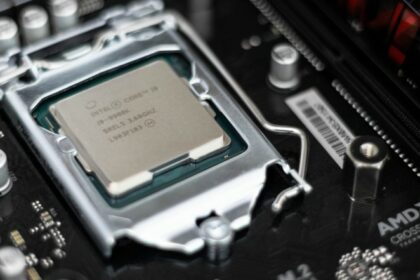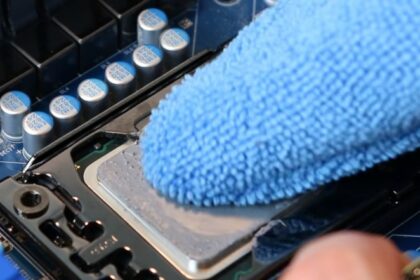Long gone are the days when the size of an SSD was so small that there was no need to partition them. Now, a lot of people want to partition SSDs as their sizes can run into terabytes, and managing everything in a single partition can be difficult.
Partitioning an SSD is an extremely simple process that can be done in just a few minutes. While there are many third-party tools that can be used to partition an SSD, the apps within Windows will also do the trick.
Here, we go through how to partition an SSD. We take a look at partitioning an SSD when you are installing Windows and partitioning another SSD while your primary drive is still in use.
Do You Need to Partition an SSD?

Before we begin partitioning the SSD, it is important to remember that an SSD is fundamentally different from an HDD. While you can use an SSD and an HDD together, you will almost certainly be running your OS on the SSD to maximize performance.
In an HDD, the outer area of the drive offers maximum speeds. As such, it made sense to partition the HDD and use the first partition as the system drive. It would maximize the speed of the system and also allow for easier file management.
In an SSD, the read and write speeds are the same no matter where the data is stored. As such, you will not see an increase in performance after you partition your SSD. The only reason to partition your drive is for better file management.
Partitioning an SSD During a Fresh Install
The first instance we are going to look at is when you have just bought a new SSD and want to use it as your primary drive. This will most likely occur when you are building your own PC. If you are unable to access the SSD before you begin installing the OS, don’t worry as it’s not a problem.
Simply plug in the SSD to the motherboard and begin the OS installation through a bootable medium (e.g. a flash drive). The setup will automatically initialize the SSD and take you to the partition wizard.
Here, you will see all of the unallocated space on the drive, and you will be able to create as many partitions as you wish.
Choosing the Correct Partition Scheme and File System
While there are many options when it comes to partition schemes and file systems, the choice between them is easy. Remember that unless you have a special use case that requires you to access legacy files and use older OS, you should simply go for the NTFS file system and the GPT partition scheme.
Other systems and schemes will lead to limitations. For example, the FAT32 file system does not allow you to store files above 32 GB, while the maximum size of a drive using the MBR partition scheme is 2TB.
Just remember that in order to use the GPT partition scheme, your PC must support UEFI boot mode. Older systems that rely on BIOS will not be able to use GPT and will have to default to MBR.
The good news is that when installing the OS and setting up your SSD, the installer will almost certainly have picked the best options for you by default.
Partitioning a New SSD in Windows

A lot of times you will purchase an SSD with the intention of using it as a secondary drive. Or, you may want to transfer some data over to the new SSD before you begin installing the OS on it. For example, your current SSD may be failing and you want to replace it before you lose all your files. In that case, you can easily partition the new SSD using a program called ‘Disk Management’.
Disk Management is a utility that is preinstalled in Windows and can be accessed by opening the Run dialogue (Windows key + R). Simply type ‘diskmgmt.msc’ to open the utility.
Here, you will be able to see all the drives that are currently connected to your PC. Remember that if you have never used the SSD before, Windows will fail to recognize it and will characterize the drive as ‘Unknown’. In this case, you will need to initialize the SSD.
Initializing an SSD will only take you a minute or so. After that, the status of the SSD will change to ‘Online’. Also, the space on the SSD will appear as ‘Unallocated’ and you will be able to partition it according to your liking.
Partitioning the SSD
Here is a step-by-step guide on how to partition the SSD after the initialization process is complete.
- Right click on the drive that you want to partition and select ‘New Simple Volume’.
- Here, you will be able to see all of the disk space available and select the size for the partition.
- After this, you will assign a letter to the partition. All of the available options will appear as a drop down menu.
- Next, you will have to format the volume using a particular file system. Once again, we recommend using NTFS for reasons mentioned above.
- In the end, you will be shown all of the options that you have selected and a partition will be created. Click ‘Finish’ to exit the setup.
What About Third-Party Software?
There are a lot of third-party applications that can be used to partition the SSD. While these programs offer a lot of features compared to the Disk Management utility, some of them are also a bit more complicated to use.
Overall, it is completely up to you which program you use to partition your SSD. As far as we can tell, the only reason to use another program is if there is a specific feature that you need and it is missing in Disk Management.






